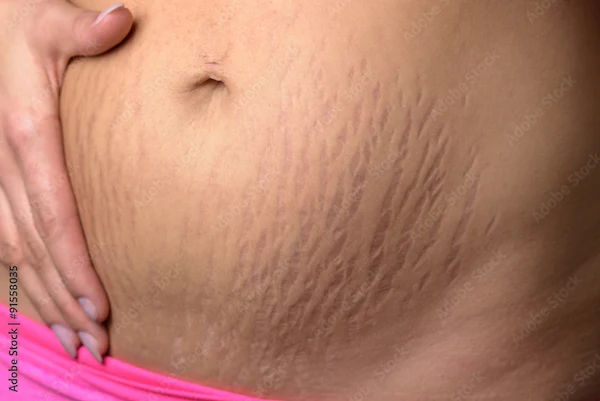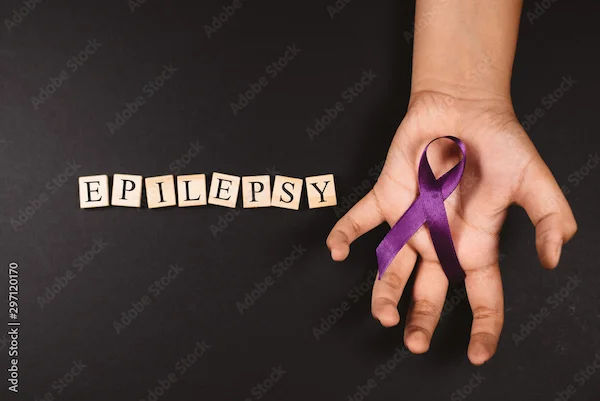Guide to Neurosurgery -Treat Shaky Hands
Know about the neurosurgery, what are shaky hands, causes, risk factors, techniques to calm it, medications and living with shaky hands and more.

Written by Dr. M L Ezhilarasan
Reviewed by Dr. D Bhanu Prakash MBBS, AFIH, Advanced certificate in critical care medicine, Fellowship in critical care medicine
Last updated on 21st Oct, 2025

Introduction
Shaky hands can be frustrating, embarrassing, and sometimes scary, especially if the tremor shows up during important moments like signing your name, holding a cup, or using your phone. The good news: most hand tremors are manageable, and many aren’t signs of something serious. In this practical guide, we bring together neuroscience insights to help you understand why hands shake, how doctors figure out the cause, and the full range of ways to treat shaky hands, from simple home strategies to advanced neurosurgery options when needed. If symptoms persist beyond two weeks, interfere with daily life, or worry you, consider consulting a doctor online with Apollo24|7 for tailored evaluation and next steps. Let’s dive into the facts so you can choose the right path to calmer hands.
Understanding Shaky Hands: Tremor Types Explained
Tremor is an involuntary, rhythmic shaking of a body part, most commonly the hands. Everyone has a “physiologic tremor,” a subtle micro shake you don’t usually notice. It becomes troublesome when it’s amplified by stress, caffeine, medications, or underlying neurologic conditions. Knowing the tremor type is the starting point for treatment, one of the most important neurosciences/know steps to treat shaky hands effectively.
Essential tremor (ET) is the most common pathologic tremor. It typically affects both hands during action (pouring, writing) or maintaining a posture (holding a cup). ET can run in families and often begins gradually in mid life, though it can start earlier. Voice and head tremor may occur, too. ET tends to improve modestly with small amounts of alcohol, a clue doctors sometimes note.
Parkinsonian tremor usually starts on one side at rest—your hand shakes while it’s relaxed and may lessen with movement. Parkinson’s disease has other features such as slowness (bradykinesia), stiffness, and imbalance. Distinguishing ET from Parkinson’s matters because treatments differ.
Consult Top Neurosurgeon for Personalised Advice
Other tremors include:
1. Dystonic tremor: Irregular tremor in a body part affected by dystonia (abnormal muscle tone/posture). Often seen in the neck (head tremor).
2. Cerebellar (intention) tremor: Worsens as you approach a target (like touching your nose), often due to multiple sclerosis, stroke, or injury to the cerebellum.
3. Drug induced tremor: Triggered by medications such as albuterol, lithium, valproate, SSRIs/SNRIs, amiodarone, or excess thyroid hormone.
4. Enhanced physiologic tremor: An exaggerated normal tremor from anxiety, fatigue, caffeine, or low blood sugar.
Why Hands Shake: Common Causes and Risk Factors
Several everyday factors can make hands shaky. Caffeine, energy drinks, nicotine, and certain decongestants can amplify tremors. So can sleep deprivation, dehydration, and stress, because adrenaline increases the body’s physiologic tremor. If your tremor fluctuates and spikes during exams, presentations, or after a poor night’s sleep, these triggers could be key.
Medical causes are important to rule out. Hyperthyroidism commonly causes a fine hand tremor along with weight loss, heat intolerance, and a racing heart. Low blood sugar (hypoglycemia) can cause shakiness, sweating, and anxiety, particularly in people with diabetes. Alcohol withdrawal can produce pronounced tremor, while in essential tremor, a small amount of alcohol may briefly reduce shaking. Medications such as albuterol inhalers, lithium, valproate, SSRIs/SNRIs, tricyclics, and certain antiarrhythmics can cause or worsen tremor. Always review your medication list with your clinician.
Age and genetics matter. Essential tremor often runs in families (autosomal dominant pattern in many cases) and becomes more noticeable with age. Men and women are both affected, and prevalence rises in older adults. Less common causes include Wilson disease (a copper metabolism disorder in younger people), multiple sclerosis, stroke, traumatic brain injury, and peripheral neuropathy affecting proprioception.
Clues to cause:
1. Tremor at rest, asymmetrical onset, plus slowness/stiffness: consider Parkinson’s disease.
2. Action/postural tremor, family history, improved with small amounts of alcohol: consider essential tremor.
3. Fine tremor with palpitations and weight loss: consider hyperthyroidism.
4. Sudden tremor after new medication or dose increase: consider drug induced tremor.
If tremor begins suddenly, worsens rapidly, or comes with weakness, speech trouble, or imbalance, seek urgent care. If your condition does not improve after trying these methods, book a physical visit to a doctor with Apollo24|7.
Getting the Right Diagnosis: Tests, Doctors, and What to Expect
A careful history and neurologic exam usually identify tremor type. Your clinician will ask when the tremor occurs (at rest, posture, or action), which tasks are hardest (writing, eating, buttoning), whether alcohol affects it, family history, and what medications or supplements you take. On exam, they’ll observe tremor at rest, with arms outstretched, and during finger to nose testing, and look for signs of Parkinsonism, dystonia, neuropathy, or cerebellar dysfunction.
Useful tests may include:
1. Blood tests: Thyroid function (TSH, free T4), metabolic panel (electrolytes, kidney/liver function), glucose/HbA1c, vitamin B12, and sometimes ceruloplasmin/copper in young patients to assess Wilson disease.
2. Imaging: Most people with typical essential tremor don’t require imaging. If the diagnosis is unclear or other neurologic signs are present, a brain MRI may be considered. In select cases of suspected Parkinson’s, a dopamine transporter scan (DaTscan) can help differentiate from ET.
3. Speciality referrals: Neurology for complex or progressive cases; movement disorder specialists for advanced therapies.
Ensure you use a simple tremor journal for one week, noting sleep hours, caffeine/alcohol intake, stress level, blood sugar symptoms, and task difficulty. Add short smartphone videos. This “neurosciences/know” snapshot often accelerates accurate diagnosis in a single visit or teleconsult. Apollo24|7 offers convenient online consults; if labs are needed, Apollo24|7 provides home collection for tests like TSH, vitamin B12, and HbA1c.
Get Your Symptoms Assessed
Calming the Shake Naturally: Lifestyle and At Home Strategies
For many people, non drug steps make a meaningful difference. Start with the “Big 5”:
1. Sleep: Aim for 7–9 hours. Even one late night can noticeably increase physiologic tremor.
2. Caffeine and stimulants: Reduce coffee, tea, energy drinks, and nicotine for two weeks and reassess. Consider switching to half caf or decaf before important tasks.
3. Stress: Practice 4 7 8 breathing or box breathing before fine motor activities; 2–3 minutes can settle a stress amplified tremor.
4. Exercise: Regular aerobic activity improves sleep and stress regulation. Light strength training of the forearms can provide steadier control.
5. Hydration and nutrition: Dehydration and low blood sugar both worsen shakiness. Eat balanced meals with protein and complex carbs; avoid long fasting if you’re tremor prone.
Hand mechanics:
1. Stabilise your forearms by resting them on a table while eating or writing.
2. Use two hands to hold cups or utensils.
3. Try weighted utensils, wide grip pens, and non spill cups. Many find 0.5–1 lb of wrist weight helpful for tasks; experiment to avoid fatigue.
4. If your tremor peaks at a certain time (e.g., mid morning caffeine window), schedule fine motor tasks earlier or later.
Mind body techniques:
1. Brief mindfulness or progressive muscle relaxation before writing or meetings can reduce tremor amplitude.
2. Occupational therapy can teach task specific strategies, like bracing techniques for makeup application or keyboarding.
Nutrition notes:
1. Alcohol may reduce essential tremor temporarily, but it is not a treatment. Relying on alcohol can worsen tremor rebound and risk dependence.
2. Large sugar spikes and crashes may induce shakiness; prefer slow release carbohydrates with protein.
3. Correct low vitamin B12 or D if present; both can affect neurologic function. Apollo24|7 offers home collection for vitamin D and B12 tests.
If symptoms persist beyond two weeks or interfere with daily life, consult a doctor online with Apollo24|7 for further evaluation..
Medications That Help: What Works, Side Effects, and Who Benefits
When lifestyle changes aren’t enough, medications can significantly reduce tremor amplitude, especially in essential tremor. The two-line options with the strongest evidence are propranolol and primidone:
1. Propranolol (a beta blocker) helps action/postural tremor. It’s often started low (e.g., 10–20 mg) and titrated. Side effects can include fatigue, low blood pressure, slow heart rate, and cold hands. It’s not ideal for people with asthma/COPD or certain heart conduction issues.
2. Primidone (an anticonvulsant) also reduces tremor. It’s typically begun at a very low dose and increased gradually to minimise sedation, dizziness, or nausea. Some people respond better to primidone than propranolol; others do best with a combination.
Alternatives and adjuncts:
1. Topiramate can help, but may cause tingling, weight loss, or word finding difficulty.
2. Gabapentin has a modest benefit for some.
3. Benzodiazepines (e.g., clonazepam) may help anxiety amplified tremor in select cases but carry dependence and sedation risks; usually short term or situational.
4. For Parkinsonian tremor, dopaminergic therapy (e.g., carbidopa levodopa) targets the underlying disease, often improving tremor along with stiffness and slowness [3].
5. If hyperthyroidism is the cause, treating the thyroid imbalance is key; beta blockers may be used in the interim for symptom control.
When Medicine Isn’t Enough: Procedures and Neurosurgery Options
If tremor remains disabling despite optimised medication, targeted procedures can deliver major relief.
Botox injections
For head or voice tremor and certain hand tremors, botulinum toxin (Botox) can weaken overactive muscles. It may reduce tremor, but risks temporary hand weakness that can affect grip. Best for dystonic tremor or selected ET cases guided by EMG.
Deep brain stimulation (DBS)
1. DBS involves placing thin electrodes into a deep brain target (typically the ventral intermediate nucleus of the thalamus) connected to a pacemaker like device under the skin. It delivers adjustable electrical pulses to disrupt tremor circuits.
2. Results: Tremor reduction of 60–90% is common for medication refractory essential tremor, with durable benefit over years in many patients. It’s adjustable and reversible.
3. Considerations: Requires surgery, battery replacements (or rechargeable systems), and periodic programming. Risks include infection, bleeding, and speech/balance changes.
MRI guided focused ultrasound (MRgFUS) thalamotomy
1. A non invasive, incisionless procedure using MRI guidance to focus ultrasound energy on the tremor target, creating a precise lesion.
2. Results: In a pivotal trial, dominant hand tremor scores improved by about 47% at 3 months and benefits persisted at 12 months for most participants.
3. Considerations: Currently it is typically unilateral (one side) in many programs, with potential for gait or sensory side effects in some. No implants or ongoing hardware management.
Choosing DBS vs MRgFUS
1. DBS is adjustable, can treat both sides (often staged), and is well-suited for younger patients or those needing flexibility over time.
2. MRgFUS avoids incisions and implanted devices, offers same day recovery, and may suit patients who prefer non implant options or have higher surgical/anaesthesia risk, but it’s less adjustable afterwards.
3. Shared decision making with a movement disorders neurologist and functional neurosurgeon is essential. This is a core neurosciences/know discussion when you treat shaky hands that resist medication.
If you’re considering procedures, consult a movement disorder specialist. Apollo24|7 can help you book an online visit to review candidacy and referrals.
Living Well with Tremor: Tools, Coping, and Your Care Plan
Assistive devices can transform daily function:
1. Weighted utensils, cups with lids, and spill resistant bowls for meals.
2. Wide barrel pens, pen grips, or digital styluses for writing. Some benefit from electronic “stabilising” utensils.
3. Anti tremor smartphone features: use voice to text, larger buttons, and stylus input.
4. Clothing: Button hooks, magnetic shirts, and zippered options reduce frustration.
Occupational therapy
An occupational therapist can customise strategies: bracing forearms, using elbow supports, selecting adaptive keyboards/mice, and pacing tasks around your tremor’s daily pattern.
Work, school, and social strategies
Ask for practical accommodations: extended time for written tasks, permission to use laptops or voice input, and flexible scheduling for fine motor tasks.
Social confidence: Prepare scripts to explain your tremor briefly if needed; most people are understanding.
Building your team and follow up
1. Combine primary care (to address triggers like thyroid issues, medications, and sleep) and neurology (for tremor type and advanced options).
2. If symptoms persist, consult a doctor online with Apollo24|7. If labs or medication monitoring are needed, Apollo24|7 offers home collection for thyroid tests, HbA1c, vitamin B12/D, and medication safety labs.
3. Reassess every 6–12 months: Tremor can evolve; treatments should, too.
Unique insight: Micro planning helps. Time coffee intake, plan fine motor tasks after brief breathing practice, and use wrist weights only for short, specific tasks to avoid fatigue. Small tweaks, big gains.
Conclusion
Shaky hands can feel limiting, but with the right plan, most people regain control over daily life. Start by identifying your tremor type and triggers—often, simple steps like improving sleep, reducing caffeine, and practising brief calming techniques produce real gains. For essential tremor, first line medications such as propranolol or primidone are well studied and effective for many. And when medicine isn’t enough, modern procedures—including deep brain stimulation and MRI guided focused ultrasound—offer powerful options with strong evidence. Along the way, don’t underestimate the impact of practical tools and occupational therapy; small adjustments in how you hold, brace, and schedule tasks provide outsized benefits. If you’re unsure where your tremor fits, or if symptoms persist, consult a doctor online with Apollo24|7 to personalise your next steps and arrange any needed tests via home collection. With a clear neuroscience and a supportive care team, you can treat shaky hands thoughtfully and get back to what matters most.
Consult Top Neurosurgeon for Personalised Advice
Consult Top Neurosurgeon for Personalised Advice

Dr. Uddalak Chakraborty
Neurologist
8 Years • MBBS, MD(GENL.MED.),DM(NEUROLOGY)
Kolkata
MCR SUPER SPECIALITY POLY CLINIC & PATHOLOGY, Kolkata

Dr Debnath Dwaipayan
Neurosurgeon
9 Years • MBBS, MS(Gen. Surgery), DrNB (Neurosurgery)
Delhi
Apollo Hospitals Indraprastha, Delhi

Dr. Debabrata Chakraborty. Age Above Sixteen Yrs.
Neurologist
15 Years • MD (Gen. Med. ), DM (Neuro), Fellow in Stroke & Cerebrovascular Diseases
Kolkata
Apollo Multispeciality Hospitals , Kolkata, Kolkata
(300+ Patients)

Dr. Avinash Gupta
Neurologist
12 Years • MBBS, DNB - Neurology
Bilaspur
Apollo Hospitals Seepat Road, Bilaspur
(125+ Patients)

Dr. A Sowmya Reddy
Neurologist
4 Years • MBBS, MD, DM
Hyderabad
Apollo Medical Centre Kondapur, Hyderabad
Consult Top Neurosurgeon for Personalised Advice

Dr. Uddalak Chakraborty
Neurologist
8 Years • MBBS, MD(GENL.MED.),DM(NEUROLOGY)
Kolkata
MCR SUPER SPECIALITY POLY CLINIC & PATHOLOGY, Kolkata

Dr Debnath Dwaipayan
Neurosurgeon
9 Years • MBBS, MS(Gen. Surgery), DrNB (Neurosurgery)
Delhi
Apollo Hospitals Indraprastha, Delhi

Dr. Debabrata Chakraborty. Age Above Sixteen Yrs.
Neurologist
15 Years • MD (Gen. Med. ), DM (Neuro), Fellow in Stroke & Cerebrovascular Diseases
Kolkata
Apollo Multispeciality Hospitals , Kolkata, Kolkata
(300+ Patients)

Dr. Avinash Gupta
Neurologist
12 Years • MBBS, DNB - Neurology
Bilaspur
Apollo Hospitals Seepat Road, Bilaspur
(125+ Patients)

Dr. A Sowmya Reddy
Neurologist
4 Years • MBBS, MD, DM
Hyderabad
Apollo Medical Centre Kondapur, Hyderabad
More articles from General Medical Consultation
Frequently Asked Questions
1) What’s the difference between essential tremor and Parkinson’s tremor?
Essential tremor happens during action or when holding a posture and often affects both hands; Parkinson’s tremor appears at rest, usually starts on one side, and comes with slowness and stiffness. A neurologist can help differentiate. Long tail keyword: essential tremor vs Parkinson’s difference.
2) How can I stop hand tremor naturally at home?
Improve sleep, cut back caffeine, manage stress with breathing techniques, stay hydrated, and use weighted utensils or wide grip pens. If tremor persists, seek evaluation. Long tail keyword: how to stop hand tremor naturally.
3) Which medication is best for essential tremor?
Propranolol and primidone are first line and help many people; your choice depends on health conditions and side effect profile. Alternatives include topiramate or gabapentin. Long tail keyword: best medication for essential tremor, propranolo,l primidone.
4) When should I see a neurologist for shaky hands?
If tremor is new, worsening, one sided, occurs at rest, or comes with other symptoms (weakness, imbalance), or if home strategies don’t help after two weeks. Long tail keyword: When to see a neurologist for shaky hands. You can consult a doctor online with Apollo24|7.
5) Are there surgical options if medications don’t work?
Yes. Deep brain stimulation and MRI guided focused ultrasound can significantly reduce tremor in suitable candidates. A movement disorder specialist can help you choose. Long tail keyword: focused ultrasound thalamotomy for shaky hands.









